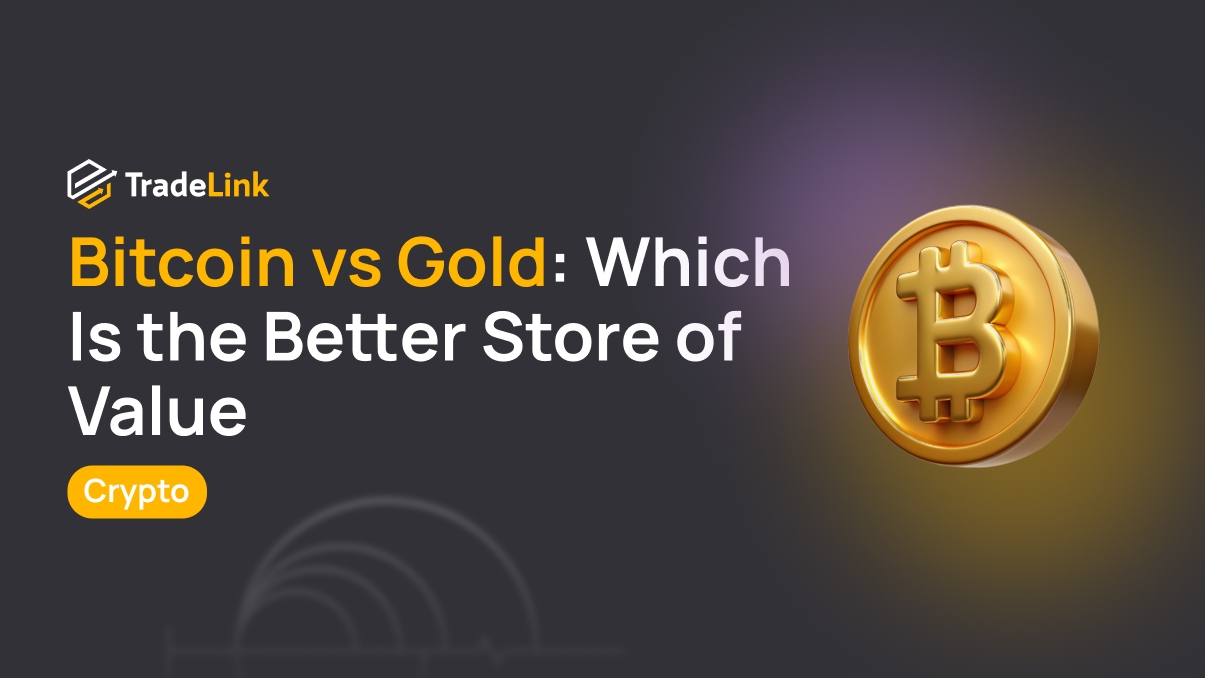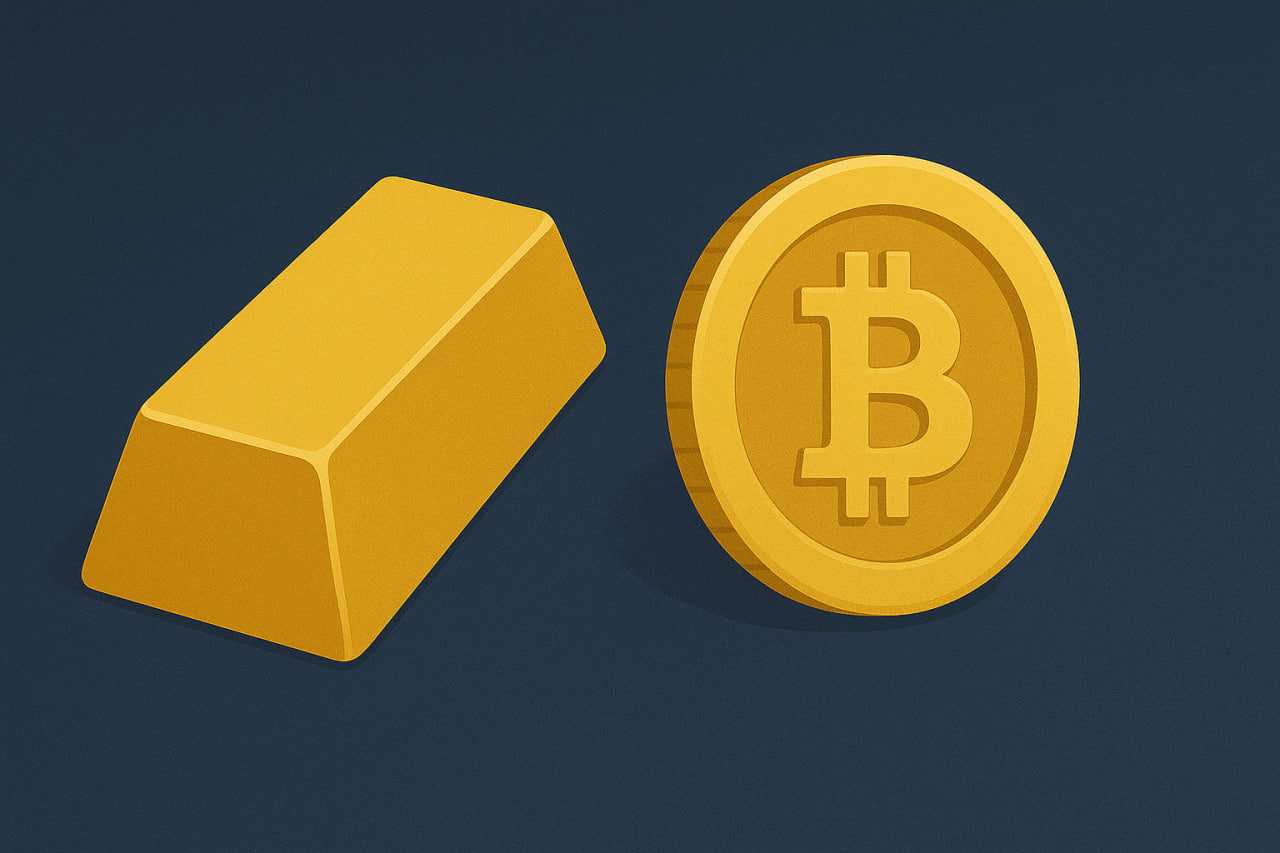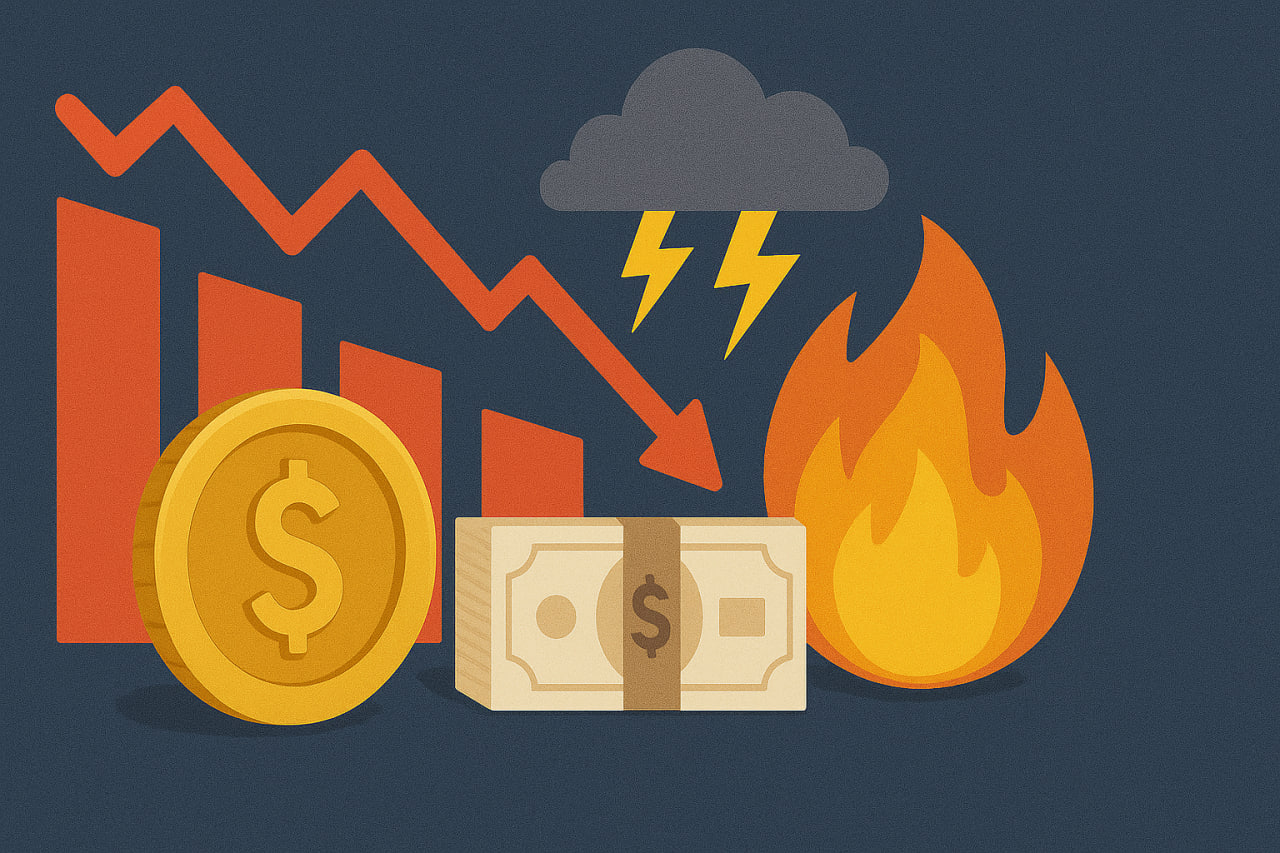Bitcoin vs Gold: Which Is the Better Store of Value

Contents
- Introduction
- What Does “Store of Value” Mean?
- Gold as a Traditional Store of Value
- Bitcoin as a Digital Alternative to Gold
- Comparing Volatility and Stability
- Protection Against Inflation
- Liquidity and Accessibility
- Risks, Regulation, and Perception
- Asset Behaviour in Crises
- Prospects for Bitcoin and Gold as Stores of Value
- Conclusion
Introduction
Comparing Bitcoin and gold as tools for preserving capital has become increasingly relevant in an era of economic instability. Investors are seeking reliable assets that can protect their savings from inflation and financial crises.
Bitcoin, often referred to as “digital gold,” and traditional gold are two assets with different characteristics but a shared goal: preserving purchasing power. This article examines how Bitcoin and gold function as stores of value, comparing their volatility, liquidity, and behaviour during crises, as well as evaluating their prospects in an increasingly digital economy.
What Does “Store of Value” Mean?

Definition of the Term
A store of value is an asset that maintains or increases its value over time, protecting against the erosion of purchasing power due to inflation or other economic factors. Such an asset must be resistant to inflation and economic shocks while maintaining its purchasing power over the long term.
Key Characteristics of a Store of Value
To be considered a reliable store of value, an asset must meet the following criteria:
- Durability: The asset must retain its physical and functional properties over time.
- Limited Supply: Scarcity or controlled issuance enhances the asset’s value.
- Universality: The asset should be recognised and in demand across different regions and economies.
- Resilience to External Shocks: The ability to maintain value during economic or geopolitical crises.
These characteristics form the basis for comparing gold and Bitcoin as tools for preserving capital.
Gold as a Traditional Store of Value
Historical Role of Gold
For thousands of years, gold has served as a universal asset for preserving wealth. It has been used as currency, a medium of exchange, and a reserve asset for banks. Its value stems from physical scarcity, resistance to corrosion, and global recognition.
Advantages of Gold
- Physical Scarcity: Gold’s finite supply and resource-intensive extraction process support its value.
- Global Recognition: Gold is universally recognised as a valuable asset, serving as a store of value worldwide.
- Stability in Crises: During wars, recessions, and periods of instability, gold has traditionally retained or increased its value.
- Independence from Technology: Gold does not rely on digital infrastructure, ensuring reliability during technological disruptions.
Gold remains the benchmark for capital preservation, particularly for conservative investors who value stability and a time-tested reputation.
Bitcoin as a Digital Alternative to Gold
The Concept of “Digital Gold”
Created in 2009, Bitcoin is often referred to as digital gold due to its algorithmically limited supply and decentralised structure. Unlike gold, Bitcoin exists solely in digital form, making it a unique tool in the modern economy.
Features of Bitcoin
- Limited Supply: Bitcoin’s protocol caps its total supply at 21 million coins, creating artificial scarcity.
- Decentralisation: The absence of a central authority protects Bitcoin from manipulation by governments or banks.
- Technological Foundation: Blockchain ensures transparency and immutability of transactions, fostering trust in the asset.
- Global Accessibility: Bitcoin can be used anywhere with internet access, making it appealing for the digital economy.
Bitcoin represents a modern alternative to gold, tailored to the era of digitisation.
Comparing Volatility and Stability

Asset Volatility
| Parameter | Bitcoin | Gold |
|---|---|---|
| Annual Volatility | Ranges from 50–80% over the past 5 years | 15% over the past 5 years |
| Short-Term Fluctuations | High | Low |
| Long-Term Stability | Unpredictable | High |
| Sensitivity to News | Strong | Moderate |
Bitcoin exhibits significantly higher volatility than gold. For instance, in 2021, its price fluctuated from $69,000 to $30,000 within months, while gold rarely shows annual changes exceeding 20%. Bitcoin’s high volatility makes it a riskier asset but potentially more profitable in the short term.
Impact on Investment Strategies
Bitcoin’s high volatility requires active portfolio management and readiness for sharp price swings. Gold, in contrast, suits long-term investors seeking predictability and low risk.
Protection Against Inflation
Response to Inflation
Inflation, driven by the devaluation of fiat currencies, is a key concern for investors. Gold has historically proven reliable as a hedge against rising prices due to its independence from monetary policy. Bitcoin, while newer, has recently begun to be perceived as an inflation hedge by investors.
Asset Behavior
Gold: During inflationary surges, such as in the 1970s, gold prices rose significantly, offsetting dollar devaluation. Gold primarily responds to long-term macroeconomic changes and is more resilient to short-term market sentiment.
Bitcoin: In 2020–2021, amid increased money supply due to stimulus measures, Bitcoin showed strong growth, affirming its potential as a protective asset. However, it is more susceptible to short-term fluctuations and reacts strongly to news and market sentiment. Unlike gold, Bitcoin has not yet been tested in large-scale inflationary crises.
Both assets can serve as inflation hedges, but their behaviour depends on the economic context and investment horizon.
Liquidity and Accessibility

Advantages and Limitations
Bitcoin is traded on global cryptocurrency exchanges 24/7, offering high liquidity. It can be easily purchased in small amounts and quickly exchanged for fiat currencies or other assets. Its digital nature simplifies storage and transfer.
Gold is less liquid due to the need for physical delivery or the use of derivatives. Selling large volumes can be challenging, and purchasing gold requires greater effort and storage costs, such as safes or vaults.
Bitcoin excels in convenience and transaction speed, while gold is a more complex asset to manage.
Risks, Regulation, and Perception
Cryptocurrencies face regulatory uncertainty. In many countries, their legal status remains unclear, and usage may be restricted, posing risks for investors. Gold, on the other hand, is a recognised asset with an established legal framework, ensuring transparent regulation and minimal legal risks.
Public trust in gold has been reinforced over centuries, while Bitcoin is still perceived as a relatively new and speculative tool. Its technological advantages and convenience cannot yet replace gold’s centuries-long reliability. Bitcoin has a long way to go before it is seen as a fully comparable alternative to gold in terms of utility and reliability.
Bitcoin’s reliance on blockchain stability and cybersecurity introduces technical risks inherent to digital assets, which cannot be fully eliminated. With advancements in quantum computing, these risks may grow. Gold, by contrast, is immune to such threats.
These factors shape asset perception: gold remains a conservative choice, while Bitcoin appeals to those open to innovation and risk.
Asset Behaviour in Crises

Gold and Bitcoin behave differently during market panics and geopolitical risks:
Gold: In crises like the 2008 financial collapse, gold exhibited steady growth, acting as a safe-haven asset. However, it is less flexible due to the need for physical logistics.
Bitcoin: During the 2020 pandemic, Bitcoin initially fell alongside global markets but quickly recovered and showed significant growth, indicating its potential as a protective asset. Its high flexibility allows seamless capital movement in most situations.
Both assets can serve as protective instruments, but their effectiveness depends on the nature of the crisis and investor preferences.
Prospects for Bitcoin and Gold as Stores of Value
Future of the Assets
Gold will remain a cornerstone for central banks and conservative portfolios due to its physical nature and historical stability. Bitcoin, however, has the potential to become a key asset in the digital economy, particularly with the rise of decentralised finance (DeFi) and blockchain technologies.
Growth Factors
- Digitisation: Bitcoin benefits from integration into digital platforms and the growing popularity of cryptocurrencies.
- Macroeconomic Trends: Rising inflation and distrust in fiat currencies could strengthen both assets’ positions.
- Institutional Adoption: Increased corporate and fund investments in Bitcoin may enhance its status as a reliable protective asset.
- Technological Constraints: Blockchain advancements bolster Bitcoin’s position, but cyber threats remain a risk.
Bitcoin and gold can complement each other in a portfolio, providing diversification and protection against various risks.
Conclusion
Bitcoin and gold both serve as stores of value, but their approaches differ. Gold is a time-tested asset offering stability and trust, particularly during crises. Bitcoin provides flexibility, high liquidity, and growth potential in the digital economy but comes with significant volatility and regulatory risks.
The choice between them depends on investor goals: gold suits conservative investors, while Bitcoin appeals to those willing to take on greater risk for higher returns. Ideally, both assets can complement each other, creating a balanced portfolio to safeguard capital in uncertain times.